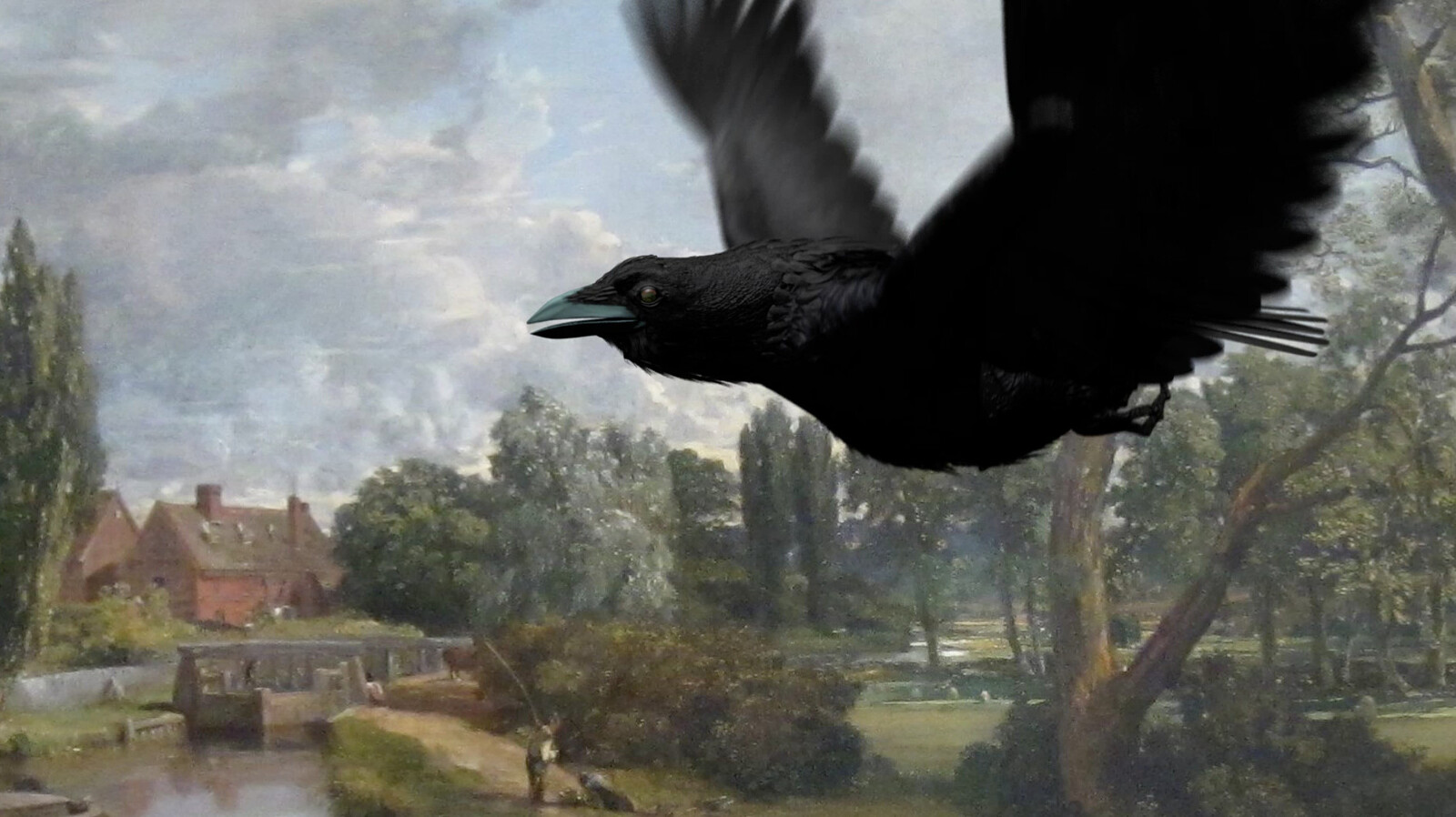The Wood for the Trees
March 23–September 15, 2024
Houtkampweg 6
6731 AW Otterlo
The Netherlands
Hours: Tuesday–Sunday 10am–5pm
T +31 318 591 241
info@krollermuller.nl
In the exhibition The Wood for the Trees, four artists examine the relationship between humans and nature in different ways through their work.
Andy Holden
In Natural Selection, British artist Andy Holden (Bedford, 1982) gives a leading role to birds, to their powers of prediction, their creativity and their impending extinction. The work also deals with guilt and taking responsibility. Pyramid Piece is a work in which Holden reconciles himself with his sense of guilt: he once took a small stone from a pyramid in Egypt.
A Social History of Egg Collecting is also about curbing the passion for collection. A talking crow tells us the history of egg collecting in Britain. The passion for collecting among egg experts sometimes leads to the disappearance of bird species.
In the video installation A Natural History of Nest Building, father Peter Holden, a celebrated ornithologist in Britain, and son Andy talk about different types of birds’ nests, nest sites and materials. While one discusses the structures as a scientist, the artist instead sees creativity and beauty.
Holden uses electronically visualised sound waves (oscillograms) of bird song for his Silent Spring. In the sculpture garden, he has placed three bronze sculptures depicting these sound waves: Auguries. The title refers to the Roman practice of predicting the future by observing birds.
Eija-Liisa Ahtila
In the work of Eija-Liisa Ahtila (Hämeenlinna, 1959), the healing effect of being in nature often plays a leading role. Her work APRIL ≈ 61°01’ 24°27’ consists of eight projections of unsynchronized camera movements through a forest in Finland. Ahtila filmed there at different locations from the end of March 2022 to the end of May 2023. The eight projections all start out the same, but soon the perspective changes. Sometimes the camera’s movement is briefly interrupted or slowed down, making the images asynchronous. Behind the wall of film images lies the sculpture garden of the Kröller-Müller Museum. The projections create the illusion of seeing the nature behind the museum wall.
Julian Charrière
For his series Limen—“threshold” or “transition”—French artist Julian Charrière (Morges, 1987) takes digital aerial photographs of the disorienting landscape of North Greenland. There are no landmarks such as houses, trees or animals. The weather changes constantly and any boundary between the sky and earth is often imperceptible. The landscape there is in constant transition.
To print his photographs, Charrière uses a printmaking technique developed in the nineteenth century: photogravure, in which photographs are printed on paper using etched plates.
Charrière composes the colours for his photogravures by grinding materials from the North Greenlandic landscape into pigments: stones, moraine clay, grit, soot and bacteria. These are then digitally scanned to create colour schemes. With these “true colours of the landscape”, Charrière creates his photogravures of an ever more rapidly disappearing landscape.
Hans Op de Beeck
The Settlement (Indoor) by Belgian artist Hans Op de Beeck (Turnhout, 1969) is reminiscent of a deserted film set where a scene could take place at any moment. Amid the black, gently rippling water stands a grey-coloured miniature village of houses on stilts. The whole is surrounded by a high, black wall. As in a theatre, visitors can take a seat in the auditorium to look out over the totality. Op de Beeck offers a place for contemplation and creates space for the imagination of the observer: “I hope to give the viewer a sense of calm, tranquillity, and from there I sneak in other questions about how we are, how we live, how we deal with time and space”. Virtually nothing happens in the miniature settlement; only the surface of the water moves slightly, reflecting the lights and houses. Just as the constant breaking waves by the sea or the flames of a wood fire are calming and clear the mind, The Settlement (Indoor) also creates space for reflection.






